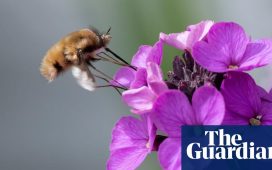Many of North America’s migratory birds are declining, but the mysteries about when and how birds migrate must to be solved to effectively protect them. A new paper in The Auk: Ornithological Advances, published by Oxford University Press, identifies a previously overlooked area that is critical for conservation: the region between southern Mexico and Guatemala where songbirds fuel up for a grueling flight across the Gulf of Mexico.
Migration is a dangerous time for birds, especially during flights over large bodies of water. Many birds migrate directly across the Gulf of Mexico, requiring over 600 miles of sustained flight. The details of how the survivors manage this feat of endurance have been murky, especially for species like warblers, whose small size prevented researchers from tracking their full migration routes until recently.
Researchers used light-weight geolocators to identify migration strategies for the vulnerable and declining Golden-winged Warbler, finding 80% of individuals spent a week in southern Mexico and Guatemala to feed and build up reserves for the flight over the Gulf of Mexico in spring migration. The importance of this stopover region was previously unknown for this species, and it needs conservation given the rapid conversion of natural habitats to pasture and farmland.
While most Golden-winged Warblers stopped in this region, not all did. Some that overwintered in northern Central America were able to make the trans-Gulf flight directly from their overwintering grounds without the stopover. “This is an important finding,” says Dr. Ruth Bennett of the Smithsonian Migratory Bird Center, “because birds that migrated directly across the Gulf were able to shave a week off their total migration time. These birds may experience a selective advantage in the spring.” That is because male Golden-winged Warblers race north in spring migration to establish breeding territories. Results from the study suggest the spring period requires more energy and poses a greater risk of predation and starvation, while fall migration allows for more flexibility to minimize energy costs and avoid risks.
“The variation we describe in migration routes and stopovers is encouraging,” says Bennett. “Variation helps buffer a population from local changes in environmental conditions.” Now that authors have identified where and when Golden-winged Warblers prepare for migration, they can start identifying the habitats that best allow birds to fuel up and successfully cross the Gulf of Mexico. This study provides a critical piece of the larger puzzle about where, when, and how to best protect the declining Golden-winged Warbler and other North American migratory birds.
Story Source:
Materials provided by Oxford University Press USA. Note: Content may be edited for style and length.












